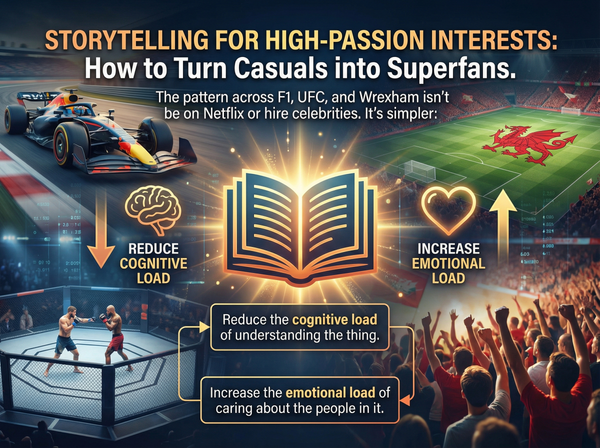Problem-Solution-Proof: VSL Framework

Video Sales Letters (VSLs) are strategically crafted narratives designed to build trust, address concerns, and drive conversions. But what makes a VSL truly effective? Often, it's the underlying framework that guides your message, ensuring you hit all the necessary psychological triggers and address your audience's needs.
Below we dive deep into one of the most classic and profoundly effective VSL structures: the Problem-Solution-Proof framework. This approach is built on a fundamental understanding of your customer's journey, addressing their immediate pain points, offering a clear path forward, and then backing it up with undeniable credibility. It leverages core human psychology: we recognize problems, seek solutions, and are reassured by evidence.
Here's how this powerhouse framework breaks down, along with actionable insights for your own VSLs:
1. Proof (Early Trust Builder)
Start strong by immediately establishing credibility. This isn't your full proof stack yet, but a powerful, concise piece of evidence that shows you understand their world and have a solution. Think of a compelling statistic, a surprising insight, or a quick, relatable anecdote from a successful client. The goal is to make your audience think, "Okay, this person knows what they're talking about, and they might have something for me." This initial snippet of proof cuts through the noise, piques their interest, and signals that what follows is worth their time.
- Actionable Tip: This could be a surprising fact about the problem you solve, a bold claim you can immediately back up, or a single powerful testimonial. For example, "Did you know 70% of businesses fail within their first five years due to inconsistent lead generation? We’ve helped hundreds of businesses not just survive, but thrive, by fixing that exact problem."
2. Promise (The Ideal Future)
Immediately follow your initial proof with the ultimate benefit or transformation you offer. What's the aspirational outcome your product or service helps them achieve? Paint a vivid picture of their desired future, free from their current struggles. This promise should be compelling, speak directly to their deepest desires, and feel attainable with your help. It sets the stakes and gives them something exciting to look forward to.
- Actionable Tip: Focus on the emotional outcome. Instead of just "get more leads," try "Imagine waking up every day to a flood of qualified leads, knowing your sales team is always busy closing deals, and your business is finally growing predictably."
3. Pain (Agitate the Problem)
Now, delve into the specific pains, frustrations, and challenges your target audience faces. Don't just list them; elaborate on the emotional and practical consequences of these problems. Agitate the pain point to make them truly feel the urgency of finding a solution. This is where you demonstrate empathy and show you genuinely understand their struggles, building a deeper, more relatable connection with your viewer. This is about validating their current reality.
- Actionable Tip: Use vivid language and relatable scenarios. Describe the sleepless nights, the frustration, the missed opportunities, the financial strain. "Are you tired of spending countless hours on marketing efforts that deliver zero results? Does the thought of another month with stagnant sales keep you up at night?"
4. Plan (Your Unique Solution)
This is where you introduce your product or service as the logical and effective solution to their pain. Clearly outline your unique approach and how it directly addresses the problems you just highlighted. Break down your solution into digestible steps or key components, making it easy for your audience to understand how it works and how it will help them. This isn't just about what your product is, but how it systematically solves their problem.
- Actionable Tip: Present your solution as a distinct methodology or system. Give it a name. "Introducing The Growth Accelerator System – our proven 3-step framework that…." This makes it feel proprietary and valuable. Highlight how it specifically mitigates the pains you agitated earlier.
5. FAQs (Pre-empting Objections)
Anticipate common questions and objections your audience might have and address them directly. This builds confidence and transparency, dismantling potential roadblocks before they arise. Think about common concerns like pricing, implementation, time commitment, guarantees, or anything else that might cause hesitation. By answering these upfront, you build trust and significantly reduce friction in the decision-making process.
- Actionable Tip: Frame these as if you're reading their mind. "Now, you might be thinking, This sounds great, but is it too expensive? Let me address that..." Be honest and direct in your answers.
6. Proof Stack (Reinforce and Validate)
Now it's time for the heavy artillery of social proof. This is where you layer on testimonials, case studies, data, awards, media mentions, social validation, and any other evidence that validates your claims and builds immense trust. Show, don't just tell, that your solution works and has worked for others. The more diverse and compelling your proof stack, the stronger your message and the more confident your audience will feel in taking the next step towards your offer.
- Actionable Tip: Don't just show screenshots. Narrate the stories behind the testimonials. Highlight specific results and transformations. Use video testimonials if possible. Quantity and quality matter here – show a breadth of successful outcomes.
Conclusion
The Problem-Solution-Proof VSL framework is a masterclass in persuasive communication because it speaks directly to the core human need for resolution and certainty.
By deeply understanding your audience's struggles, presenting a clear path to their desired future, and then backing up your promises with compelling evidence, you create a powerful narrative that drives action.
Keep Crushing!
- Sales Guy

